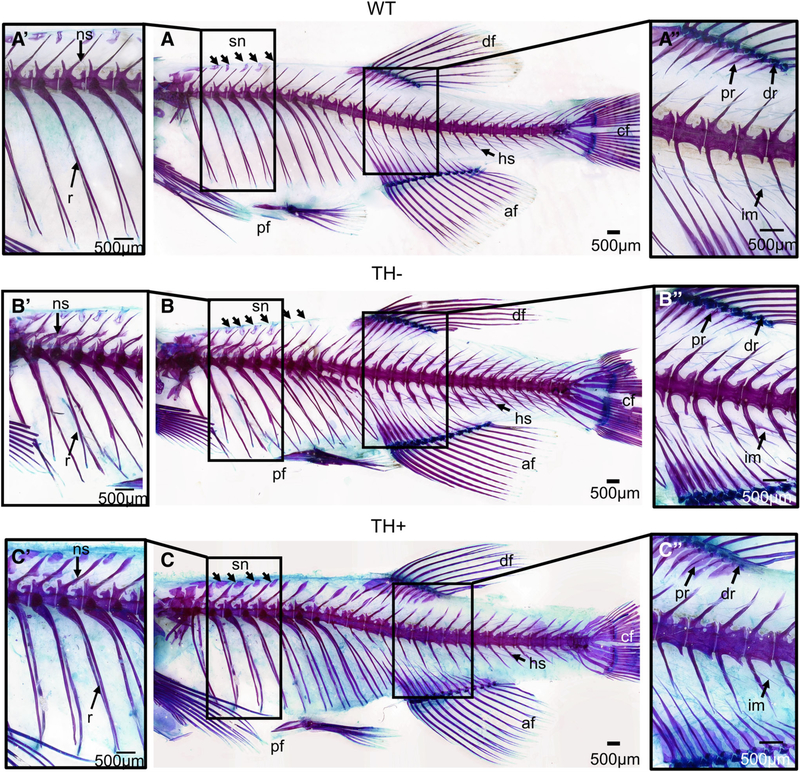Fig. 7.

Cleared and stained axial skeleton from WT, TH−, and TH+ zebrafish. (A, A’, and A”) Lateral view of the WT axial skeleton. (B, B’, B”) Lateral view of the TH− axial skeletal. The TH− skeleton is more compressed on an anterior to posterior axis (B). Note the secondary projections and lack of structural rigidity of the neural and hemal arches and spines (B’). Also note the proximal and distal radials fail to fully ossify (B”). (C, C’, and C”) Lateral view of the TH+ axial skeleton. The TH+ zebrafish is overall larger on the anterior to posterior axis (C). Note that the neural and hemal arches and spines are larger than that in WT and the anterior most supraneurals broaden instead of narrow at the tip (C’). Abbreviations: af, anal fin; cf, caudal fin; df, dorsal fin; dr, distal radials; hs, hemal spines; ns, neural spines; pf, pelvic fin; pr, proximal radials; sn, supraneural.
